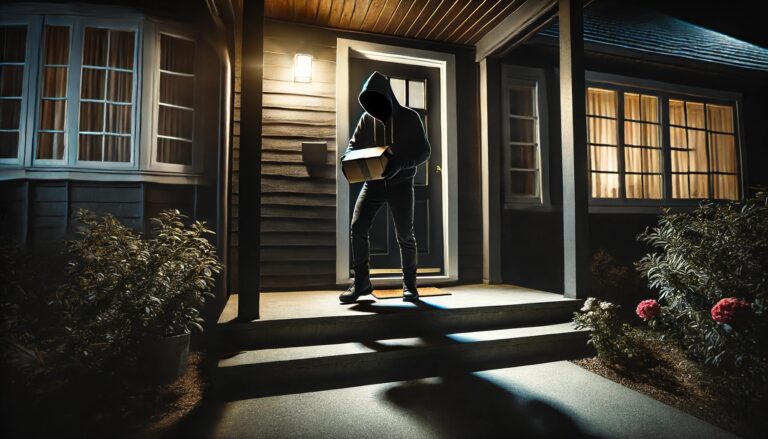Porch piracy, or stealing packages from doorsteps, is a growing concern in the e-commerce and delivery industry. With the surge in online shopping, especially during the holiday season, package thefts have risen dramatically. In fact, in 2023, around 235 million packages were estimated to be stolen in the USA alone, leading to an estimated financial impact of approximately US$13.4bn annually. This trend not only impacts financial losses but also erodes consumer trust and satisfaction in online shopping.
Latest developments
Recent studies highlight that package theft continues to be a widespread problem. For example, about 49 million Americans reported having at least one package stolen in the past year. Technological advancements such as doorbell cameras and smart delivery lockers have been adopted by consumers, but the effectiveness of these measures varies. In essence, we believe that it is high time that we ‘rethink the front porch.’
How to combat package theft
To combat porch piracy effectively, several strategies can be implemented:
- Out-of-home delivery (OOH): Using parcel lockers or PUDOs (access points) significantly reduces the risk of package theft. Companies like Amazon, InPost, DPD or DHL offer services, enabling customers to pick up their packages conveniently and securely.
- Smart delivery systems: Installing doorbell cameras and security systems can deter thieves. Around 50% of people in the USA have invested in such devices to protect their deliveries. These systems provide real-time surveillance and offer video evidence in case of theft. Of course they won’t stop all miscreants but will doubtless reduce the occurrence of theft.
- Delivery scheduling and instructions: Consumers should take advantage of the delivery scheduling options (time windows) when offered by carriers, to ensure packages are delivered when someone is home. Also, they can instruct delivery personnel to leave packages in secure, less visible place. One caveat is to avoid refuse bins; yes, believe it or not this is not uncommon as a designated ‘safe space’!
- Buy online, pick up anywhere (or click & collect in Europe): This strategy involves purchasing items online and picking them up at a retail location. In essence, this is similar to OOH delivery, except that items are typically collected at the selling retailer’s locations.
- Residential parcel lockers (RPLs): There are a good solution and can take the form of multi-cell lockers in residential buildings or, operationally preferable, outside them so they are commonly accessible.
- Personal parcel lockers (PPLs): PPLs are lockable drop boxes on porches or other convenient and accessible areas that can provide a secure place for delivery personnel to leave packages. Their main drawback relates to the possibility of several couriers gaining access, and to capacity, especially at peak time. Also, operationally, they are sub-optimal as they require the courier to drive to individual addresses, typically delivering only one or two parcels per stop.
- Smart locks and devices: Products such as Amazon Garage Key or Nuki Smart Lock can offer a good solution for heavy and bulky items or for secure multi-residence concierge rooms. Here the courier can be given one time or specified time access and can be observed on camera all the time as he delivers or collects items.
Expected future developments
Looking ahead, the industry is likely to see more integration of AI and IoT in delivery services to enhance security, such as the real-time tracking and porch piracy preventive technology by Zflo Technologies. Predictive analytics, such as UPS DeliveryDefense, could help identify high-risk areas and times for package theft, enabling more strategic delivery planning or suggesting alternatives for consumers.
Additionally, developing delivery drones, as demonstrated by Arrive Tech, and other novel delivery methods could revolutionize how packages are delivered and secured. However, drone versatility and secure flight path technology would need to move forward for this to be used at scale.
Conclusion
Porch piracy is a significant challenge in the e-commerce and delivery industry. Crime is shifting from back alleys to front porches, turning fulfillment centers and delivery routes into a new ‘battleground’ with couriers at the core. By adopting a combination of technological solutions and strategic delivery planning, both consumers and businesses can mitigate the risks associated with package theft, ensuring products make the ‘last foot’ of the last mile and are in the hands of those who ordered them.


